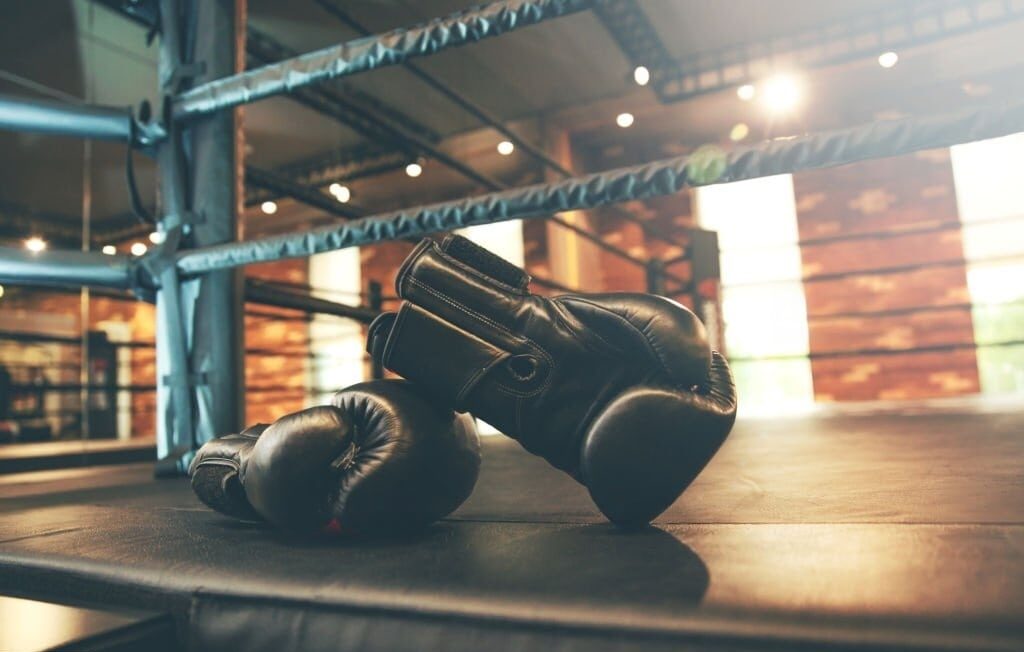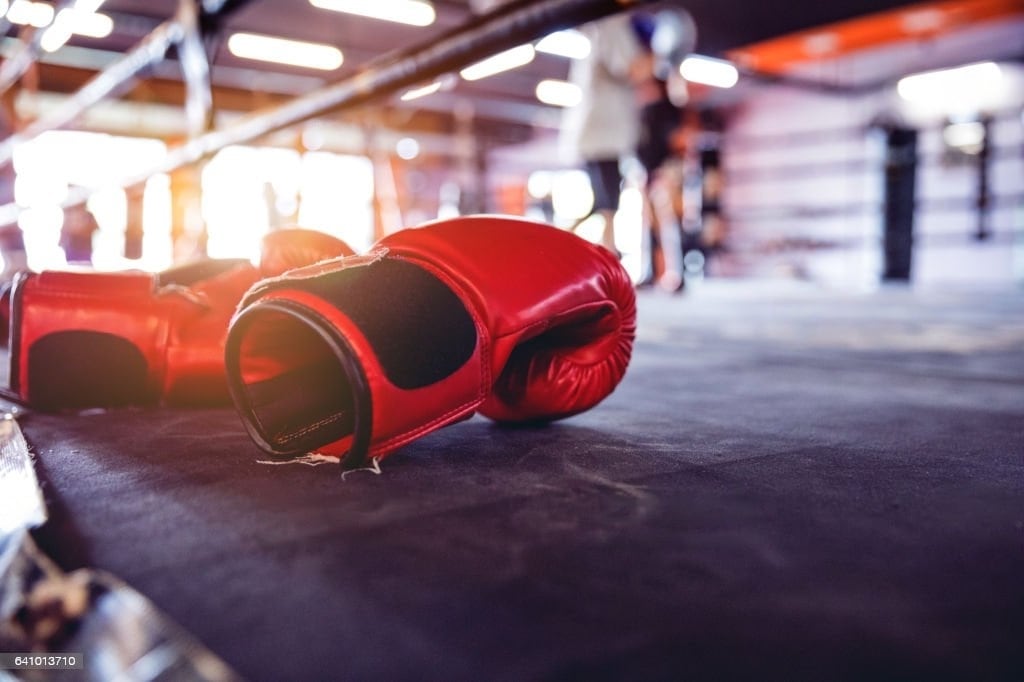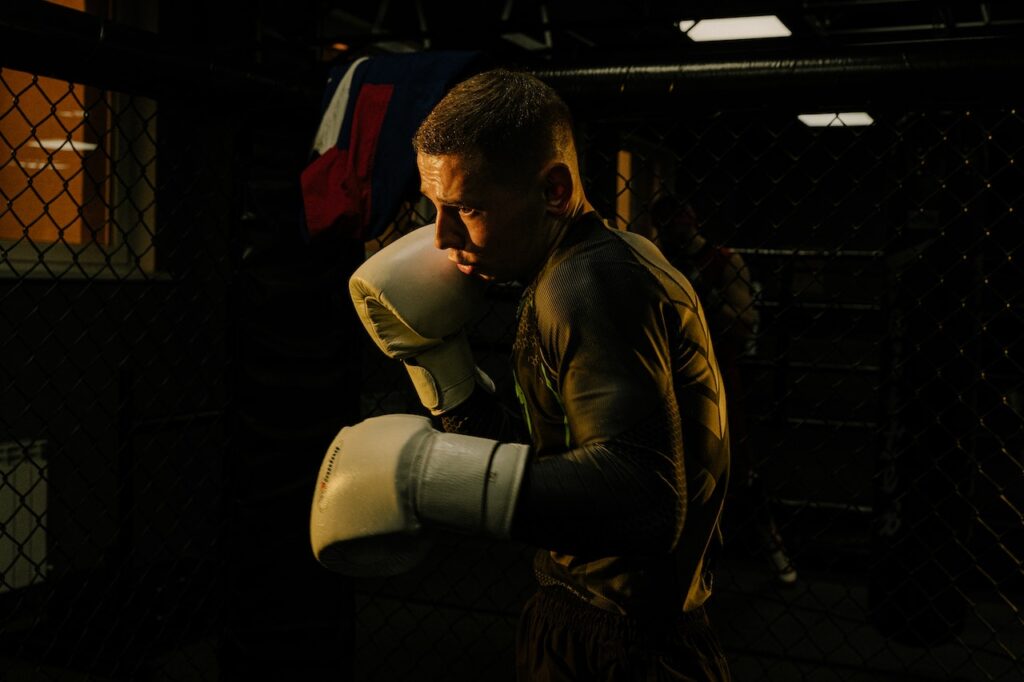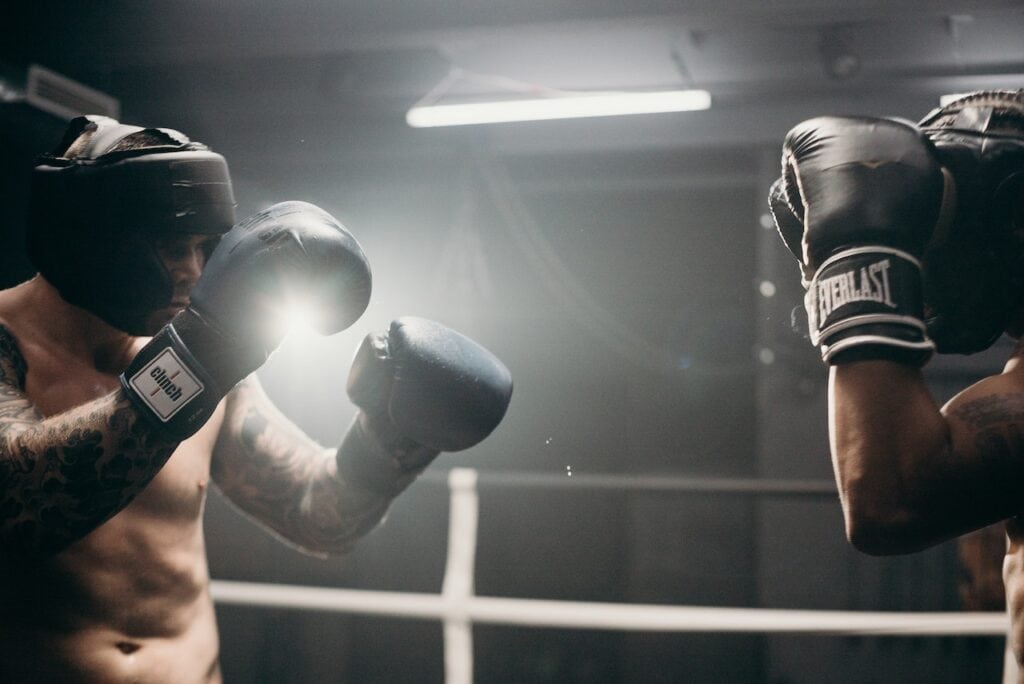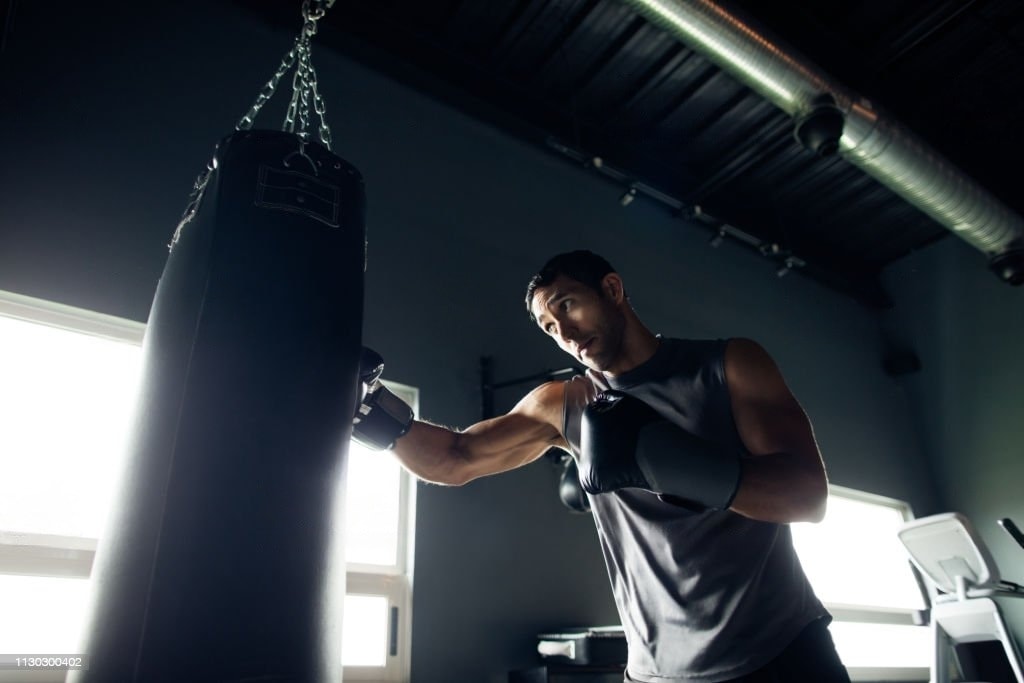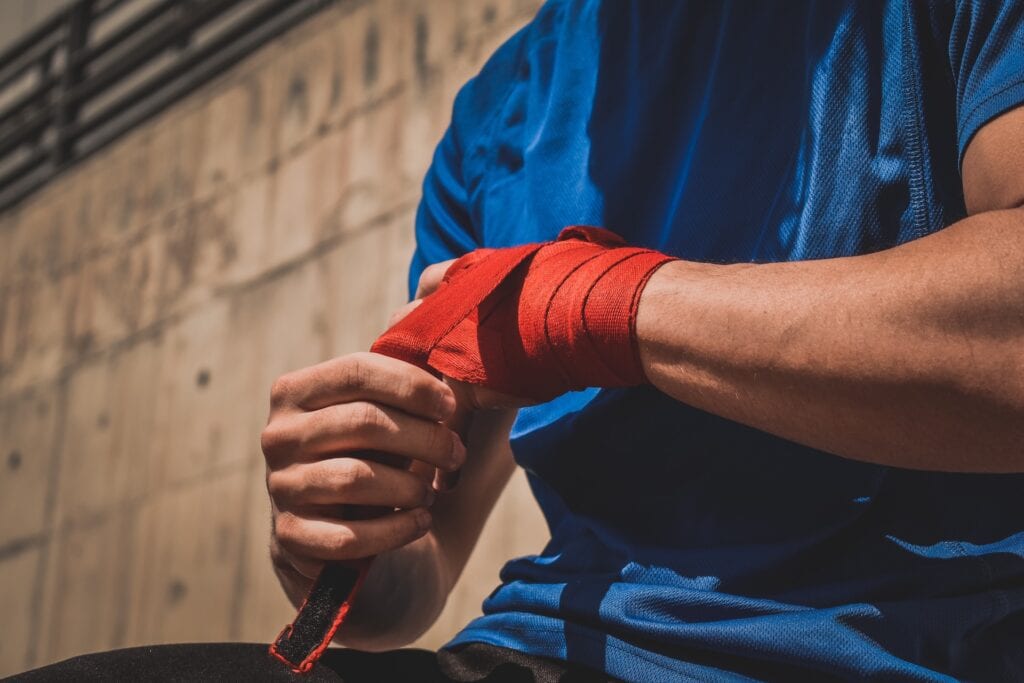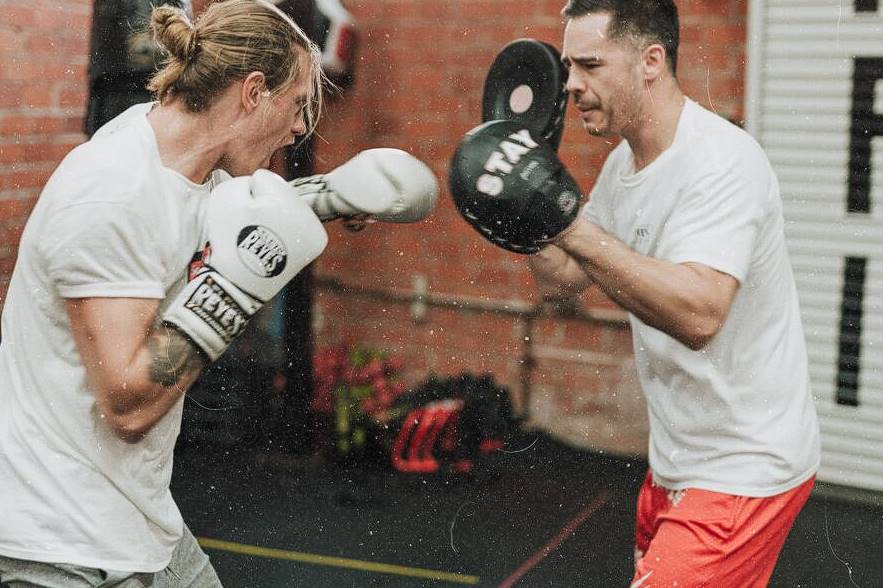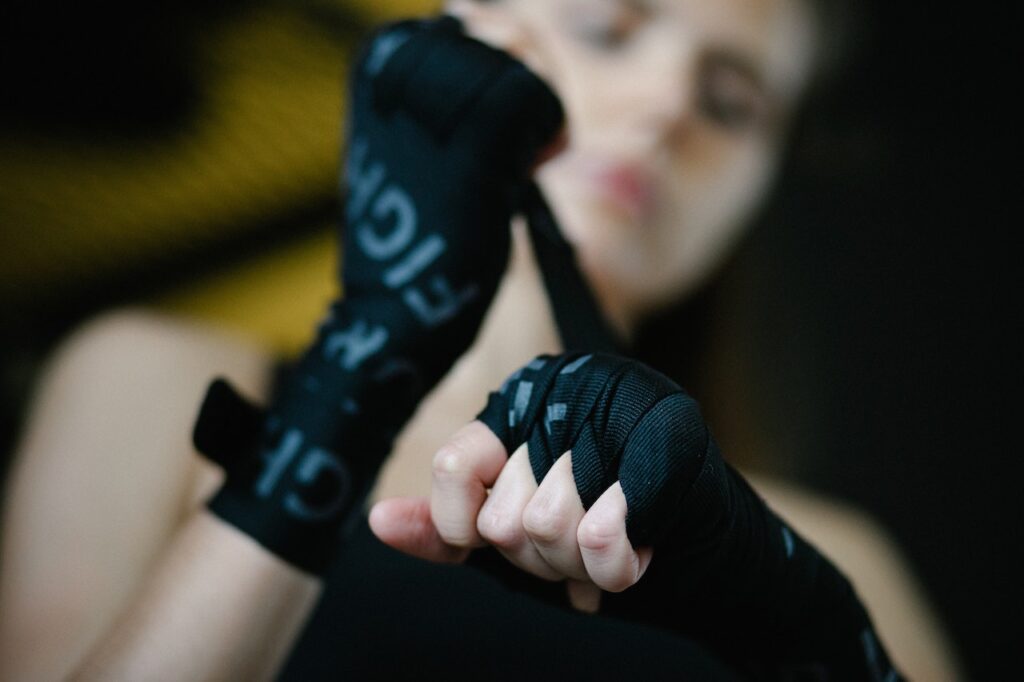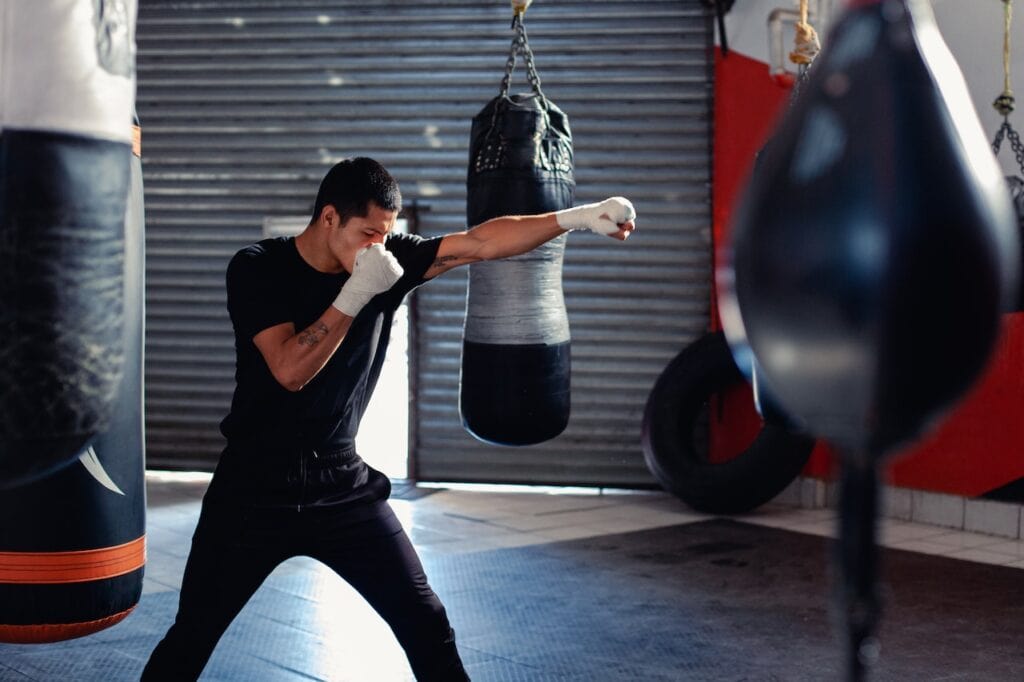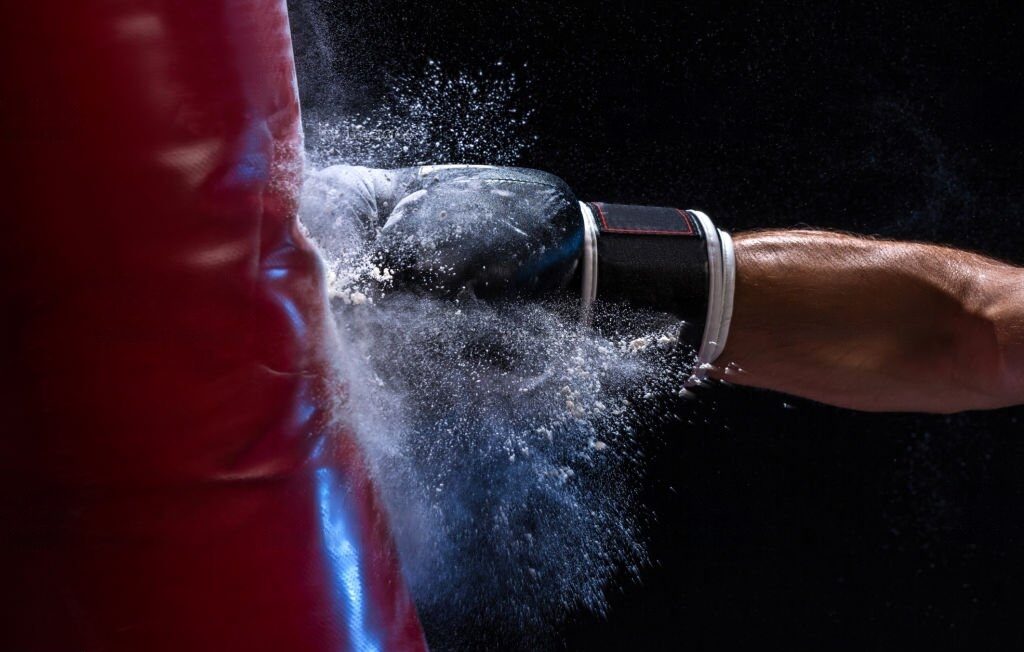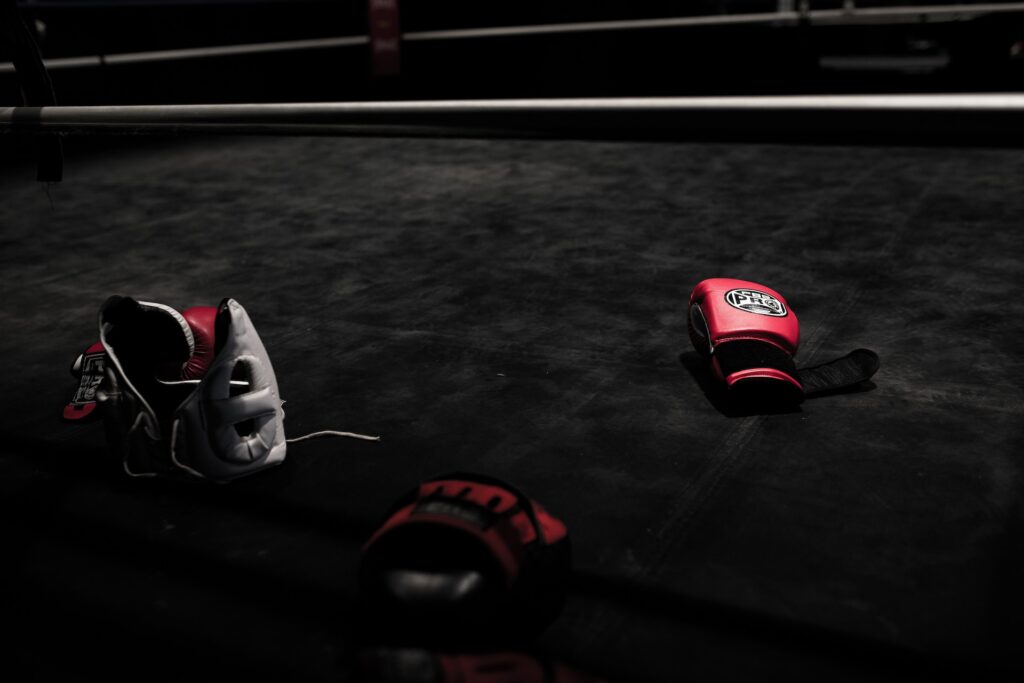It is important to have a conversation about dirty boxing, although it is contentious. In the end, boxing is real fighting, yet, it takes place in the ring, a controlled environment. As a result, it is essential to educate oneself on ALL approaches, especially those that are only seldom included in standard instruction.
Boxing in its original form is known as a "dark art." It is not about intentionally fouling an opponent by poking them in the eye with your thumb or delivering a haymaker to the private parts of their anatomy. Instead, to achieve a modest advantage over one's rivals, it is necessary to manipulate and subvert the established norms.
Dirty boxing does not inflict damage on an opponent but frustrates them and takes them off their game. It can be accomplished by placing forearms and elbows in an opponent's face and throwing punches in the clinch.
When watching a boxing or mixed martial arts match on television, the commentators frequently use the phrase "dirty boxing." However, this could lead to confusion among fight fans who are unfamiliar with the term "dirty boxing" as it is used in the world of fighting. Nevertheless, it is relatively easy to comprehend what dirty boxing is all about, even though, upon closer inspection, it can appear somewhat convoluted.
When a boxer engages in dirty boxing, they try to gain a tactical advantage over their opponent by throwing short punches from the clinch position while grabbing the back of their opponent's head. In combat sports, "dirty boxing" refers to a collection of boxing tactics that deviate from the norm and are sometimes on the verge of breaking the law.
It is permissible for boxers to use dirty tactics as long as they do so correctly, and this strategy has the potential to be very successful.
What Is Dirty Boxing?
First things first, let's talk about what exactly "dirty" boxing is.
The phrase "dirty boxing" is commonly used in the sport, although its roots can be traced back to the Philippines. Streetfighting, also known as aquatic, was a popular form of competition.
Freestyle combat techniques emphasising self-defence are incorporated into the art of aquatic. These techniques include hammer fists, back fists, headbutts, crotch strikes, and elbow strikes. Some people will even go so far as to poke their opponent's eyes or bite their lips to humiliate them.
In recent years, the term "dirty boxing" has gained widespread usage in the sport of boxing. The sport's competitors took to this method so quickly that it eventually became ingrained in its tradition. Some of the best boxers and MMA fighters have been known to resort to underhanded strategies for their careers.
Where Did The Term Dirty Boxing Come From?
There is no clear record of who first used the word "dirty boxing," and it is impossible to determine who coined the phrase. However, this name could be traced back to the striking component of the Filipino martial art known as Suntukan, where the term first appeared.
Suntukan is not a sport; it places a significant amount of emphasis on the art of self-defence and the use of "dirty street fighting" techniques such as eye gouging and groin strikes. In addition, it incorporates several other filthy boxing moves that are common in modern boxing and mixed martial arts, such as:
- Headbutts
- Forearm strikes
- Hammer fists, Back fists
- Buttocks of the shoulders
- Elbow Strikes
The Science Of Dirty Boxing: 9 Techniques To Frustrate Your Opponent
1) Referee Blindspot
If you know how to position yourself correctly, you can get away with many different things. If you can manoeuvre your opponent into a position in which they are between you and the referee, this will provide the referee with a blind spot. After taking this step, the probability of being caught while carrying out an unlawful move is significantly reduced.
In his pomp, boxing great Bernard Hopkins, who won world championships in numerous weight classes and divisions, was a master of this method. Using this strategy, Hopkins would conceal his illegal conduct from the referee. As a result, many of his adversaries would become so enraged that it would throw them off their game physically and emotionally.
It was well known that Hopkins made use of this blind spot. He would intentionally back himself into a corner or against the ropes to restrict the referee's field of vision. He would then grab his opponent's wrist, attack them with short elbows and shoulder strikes on the inside, and he wouldn't get penalised since the referee didn't see it happening because he was holding the wrist.
If your opponent uses this strategy, you should be prepared. A particular movement pattern will become apparent to you.
2) Toe Stepping
When a fighter with a traditional stance faces off against one with a southpaw stance in the ring, they frequently inadvertently step on each other's toes. Positioning the combatants' feet in the two fighting postures makes it an inevitable occurrence in the boxing ring. Toe stepping and foot-stomping, on the other hand, can be done on purpose to impede the movement of an opponent or make them reconsider whether or not they should move.
It is accomplished by stepping on an opponent's toe on purpose with the extended lead foot, which is then immediately followed by a punch, most commonly a rapid lead cross. The toe step itself is not unpleasant, but because the opponent can feel it, it generates sufficient shock to momentarily distract their focus, enabling you to connect with the punch behind it.
In their four bouts together, the Mexican boxing legend Juan Manuel Marquez employed this strategy numerous times, intentionally or unintentionally. Manny Pacquiao is an icon in the Philippines. During the third round, it was a subject that generated a lot of heated debate. Fans thought that Marquez's frequent foot stomping significantly impacted the fight.
In a boxing match, you must be extremely cautious about where you place your feet at all times since the fight for lead foot position is highly essential.
3) Punch Into The Clinch
It can be challenging to start a clinch, particularly after you have done it so frequently. As soon as you notice you moving in for the clinch, your opponents will circle away and keep the action in the centre of the ring. So, naturally, adjustments will be made by your opponents. However, one way to shake things up is to shift from an offensive position into a clinch by using your attack.
After landing a straight blow, immediately get into a clinching position and continue the exchange. Your forward momentum will be sufficient to put you into close quarters, and at that point, all that will be required of you is to tie up your opponent. After you've completed a combo, another option is to go for the clinch.
4) Tie Up The Arms
Some competitors like to throw a lot of punches at once and have an aggressive style. When used in this context, clinching can become very effective. You can successfully nullify an opponent's strike by tying up his arms while he is throwing a combination of punches and kicks. In addition to this, you can consistently aggravate your rival.
Even at the highest echelons of competition, many skilled combatants employ the grey-area defensive strategy of clinching to interrupt the flow of the action and buy themselves some time. It may be a fundamental component of their overall approach in certain circumstances.
Fighters, including Ricky Hatton, Lennox Lewis, and Bernard Hopkins, were masters at tying up their opponents' arms and preventing them from moving forward with their offence.
It is irritating and causes opponents to act out on that frustration, which leaves them vulnerable to making serious mistakes. Not only is it frustrating, but it also forces opponents to act out on their frustration.
5) Smothering
Combat requires a significant investment of stamina. Utilising leverage in the clinch is one tried-and-true method for depleting the strength of an adversary. Put your opponent under your weight by draping your body over him and lacing your arms and gloves over his body. It will force him to carry your weight.
When your opponent makes more effort to shake his arms free, you will need to hold on even more tightly. Not only would it be challenging for him to break free, but it would also be extremely taxing. It's like trying to swim through quicksand while wearing a straight jacket. If you do it early enough and often enough, your opponent won't have any strength left by the middle of the fight.
This strategy is known as smothering. It is an excellent method that allows you to rapidly and effectively drain your opponent of all of their vitality without even having to deliver a blow.
6) Body Shots In The Clinch
It is improbable that you will be able to score a knockout in the clinch by targeting the head, but you may inflict a lot of damage by striking the body. Boxing is a sport characterised by intense competition, and one strategy that has shown to be successful and widespread in the sport is "dirty boxing."
When you have your opponent's arms tied up, it is a perfect opportunity to get some free shots in by punching your opponent's body while you are in the clinch. They will have difficulty guarding, allowing you to string together two or three shots before the referee intervenes to break it up.
By continually digging into the kidneys and the liver, your opponents will have less energy to use against you. So even while each of these shots doesn't accomplish anything independently, their cumulative effect should become more significant as the fight continues.
7) Forearm Smash
The forearm smash was yet another excellent dirty boxing technique that Mayweather frequently utilised. It is a cunning technique aimed at manipulating an opponent who likes to go in close and punishing them with a shot from nowhere. The goal of this move is to control an opponent who likes to get in close.
In boxing, using your forearm is technically an unlawful tactic, but you can get away with it if you don't use it in a way that is intended to hurt your opponent.
Mayweather frequently used his lead left forearm to thrust into his opponent's face, and then he would back off slightly before unleashing a devastating right hook over the top of it. It enables the firing of a shot that is very accurate, powerful, and difficult to avoid.
Because the forearm shouldn't stay on an opponent's face for more than a split second, this technique works best when accompanied by speed and quickness. When done correctly, it serves primarily as a setup for the shot that comes after it and may be quite powerful.
8) Head Control
The term "head control" can refer to either the act of controlling an opponent's head by grabbing the back of their neck, as in the head clinch used in Muay Thai, or the act of strategically positioning your head by burying it into an opponent's chest, shoulder, or chin.
When it comes to head control, dirty boxing offers several tactics that, when applied in the ring, will cause mayhem.
To begin, grabbing an opponent's back of the neck will lock their head in place, allowing you to hit them with short shots on the inside of the ring. It is helpful when facing opponents with a lot of head movement.
Second, when you're in a confined space, the location of your forehead can have a significant impact. Gennady "GGG" Golovkin, a former middleweight champion, demonstrates in this video how he can move his head while in the clinch position to provide him with a distinct competitive advantage in various ways in-fighting situations.
9) Jab To The Forehead
A well-placed jab to the forehead may annoy any opponent, especially if you can connect with frequency. It is the last point, but it is the most important.
Although it is not technically considered a dirty boxing technique, it has the potential to wreak havoc on the rhythm of your opponent and frequently causes him to deviate from his game plan entirely.
The nose or chin of an opponent is typically the focus of a traditional jab's thrust. And that is the correct way to apply it, but aiming a little higher, especially towards the forehead, provides a different impression than doing it properly. It causes an opponent's head to be thrown back, which momentarily blocks their vision of you and disrupts their line of sight to you. If you are quick enough and accurate enough, you can surprise your opponent with a lethal shot they won't anticipate.
Olympic boxers use this strategy because it's effective at raising point totals.
However, exercise caution. You want to punch with a manageable force in this location. The human head's most robust component is the skull's anterior portion. You could easily fracture your hand if you punched with sufficient force. Use a rapid flicker jab as an alternative to achieve the same knockback impact.
Even if you have no intention of employing any of its strategies, you should still learn about dirty boxing since it is a significant component of the sport and because it is something you should study. In addition, you may spot trends and effectively defend against them if you arm yourself with the power and understanding of filthy boxing methods. These techniques allow you to use your fists and knees to knock out an opponent.
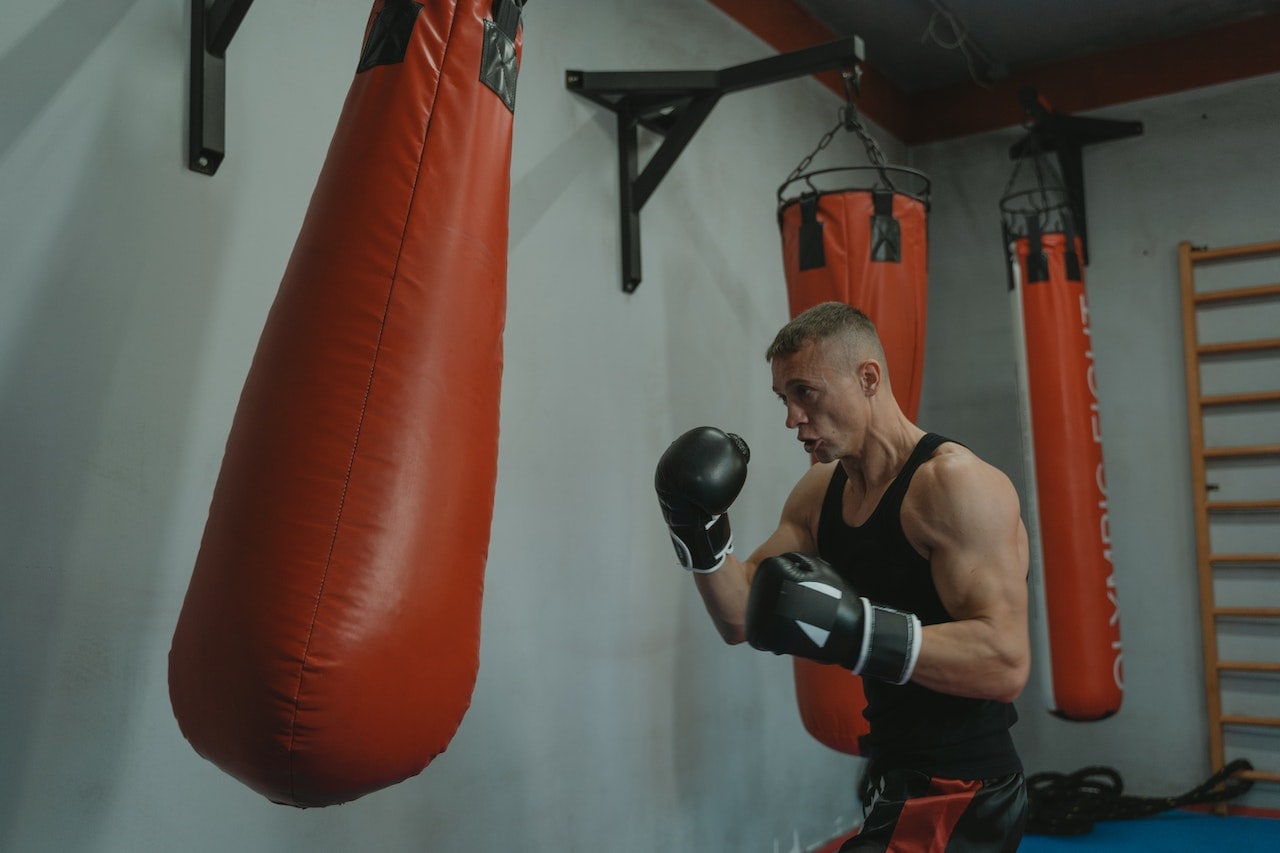
Which Dirty Boxing Moves Are Used In Boxing?
When we hear "dirty boxing," the first thing that likely comes to mind is a professional boxing battle. Let's be honest about this. Boxers do not engage in more unsportsmanlike conduct than competitors in other fighting arts. However, as time has passed, the phrase "boxing culture" has evolved to include the term itself.
The following are some of the most well-known dirty boxing moves utilised in contemporary boxing. We are forced to admit that some of the moves are quite close to crossing the line into foul territory:
Create a referee blind spot:
When executed correctly, it is a dirty boxing move that provides an angle in which the referee can't see what you are doing and allows you to continue fighting. The objective is to secure a clinch and move the opponent into a position from which the referee cannot view what is happening in the match. It allows boxers to land illegal strikes, such as headbutts or sly elbows, and get away with it.
Bernard Hopkins was recognised as one of the greatest practitioners at getting an opponent into such a position. To begin, he would press them up against the ropes, providing the referee with a blind place to watch. After that, he would hold the opponent's wrists or hit the opponent with unlawful short elbows.
Clinching to recover:
Boxing bouts almost always end up in a clinch at some point throughout each round; therefore, it is essential to know how to fight in this position. For example, when faced with an attack from their opponent, boxers will typically duck under it and go for a clinch as a defence. Alternately, this strategy is quite effective if a fighter sustains an injury.
When a boxer takes a blow to the face, the worst thing that can happen is for their opponent to continue to strike them. It is because the fighter is already in pain. Therefore, to stop them, a boxer who was injured would grip their opponent about the waist or the neck to pause the action and give themselves a few seconds to recover. Boxers engage in this practice during the vast majority of their bouts.
Forearm push:
One of those stealth moves in boxing frequently results in a devastating knockout for the opponent. During the exchange at close range, the key is to place your forearm on your opponent's face. You can restrict their field of view this way, preventing them from seeing a follow-up punch that typically connects with great force. And as we all know, the blows that knock an opponent out are not often the ones they see coming.
Head positioning:
Boxers frequently come into contact with one another and compete fiercely for the head position during bouts. The average person could assume that they are doing this because they are leaning on each other for support to get some rest. But in actuality, controlling your opponent's head is a key technique in dirty boxing that provides you with a significant edge in various settings. For example, it allows you to move the opponent into the position you like for them to be in or to build up the striking combo.
What to Know About Dirty Boxing?
Many believe dirty boxing is cruel, and the sport is the subject of much debate. But, on the other hand, it is now completely ingrained in the boxing culture. Therefore, both professional and amateur boxers, as well as fans of the sport, ought to educate themselves further on it.
Let's talk about some of the more important aspects of dirty boxing.
Is Dirty Boxing Legal?
Although dirty boxing cannot be sanctioned, fighters can use dirty boxing techniques during a contest. Many of the previously discussed tactics were on the verge of being illegal. Still, when they are carried out "correctly," they can give combatants an advantage over their opponents.
How to Learn Dirty Boxing?
When it comes to tournaments and situations in real life where you need to defend yourself, dirty boxing can be an extremely efficient method.
Even though they are perceived to be "dirty," these methods have to be carried out correctly. Therefore, acquiring the appropriate motions and strategies is highly necessary rather than relying on freestyle.
Some boxing clubs teach a kind of boxing known as "dirty boxing" (also known as "Filipino Boxing") in which participants can learn methods that are both safe and effective that they can adopt into their fighting style.
You can also acquire dirty boxing methods from other striking arts, such as MMA and Muay Thai. These disciplines include diverse striking techniques. However, because of their greater versatility and the frequent use of knees, elbows, and fists, these two sports are the ideal martial arts for exploring the art of dirty boxing.
Top 21 Dirty Boxing Techniques
Punch To The Back Of The Head
It's against the rules to punch someone in the back of the head. It is because the back of the head is a very vulnerable location. Because it is the method hunters use to dispatch rabbits, the punch is referred to as a "Rabbit Punch." Boxers will "throw" punches to the back of the head throughout a fight, either inadvertently or purposely.
The technique known as the "rabbit punch" is one that Deontay Wilder, a professional boxer, has mastered to a flawless degree. It is required to have a wider arm span than the opponent to execute the technique successfully.
One Hand Holds, and The Other Hand Punches
It violates the rules of boxing to grasp an opponent with one hand while simultaneously punching with the other. The referee is responsible for breaking up the grip. On the other hand, if you perform this trick rapidly, you can perform several techniques in which the hand drags the opponent on the punch.
The precise timing of this hold is essential to accomplishing this feat. The legendary boxer Mohamed Ali frequently employed a strategy that was very similar to this one.
Forearm Pressure On The Neck
A time-honoured move utilised by tall boxers. It is required to have a height advantage over the opponent to carry it out (or at least to be at the same height). Applying pressure on the neck with the forearm is an effective move. It provides several benefits, such as depriving the opponent of energy and slowing down the game's pace.
A victory at some point throughout the conflict is beneficial as well. Wladimir Klitschko is an expert in this particular fighting style.
Trip Up
Boxing footwork is one of the most critical aspects of a successful fight. In boxing, competitors cannot utilise their legs to do technical maneuvers, unlike kickboxing. Tripping may prove to be beneficial in certain circumstances. The trip-up maneuver ought to be performed concurrently with the punches.
The referee will not be able to witness the commencement of the leg movement if it is performed in this manner. But, on the other hand, if it is executed successfully, the adversary will become off-balance and fall. So it is going to be counted as a knockdown by the referee. It was a strategy that Amir Khan would employ on occasion.
Stepping On A Foot During A Punch
This move is quite similar to the journey up. However, the technical execution is slightly different. When fighting an opponent who adopts the opposite posture from you, it is advantageous to step on the foot during the attack. It makes it easier to maintain balance. If you box left-handed, it is recommended to do so with a right-handed opponent, and vice versa if your box is right-handed.
Stepping on the foot is not permitted, but if you do so quickly, you can create a stopping effect. The adversary will not be able to outrun you if you proceed in this manner. Juan Manuel Marquez employed this strategy in his third bout against Manny Pacquiao, which was successful. Pacquiao's right foot was prevented from moving forward by Marquez's left foot.
Because of this, Marquez could land his strike on a controlled target.
Injury Simulation
Boxing's a quintessential example of an improper technique. During his bout with Arthur Abraham, Andre Dirrell displayed excellent simulation. In the eleventh round, Dirrell was unable to maintain his equilibrium. As a result, Abraham delivered a small punch to his opponent, who was kneeling. Dirrell pretended to be hurt to get out of continuing the bout.
In a legal sense, he was allowed to carry it out. However, after watching the clip multiple times, it was clear that Dirrell was acting. As a result, the referee decided to exclude Abraham from the competition.
Push And Punch
Put pressure on it with one hand while you strike it with the other. What could be more simple? However, such maneuvers are not permitted in the sport of boxing. This procedure must be completed rapidly. The first movement determines the effectiveness, which must throw the opponent off balance to be successful. After the shove, you must instantly deliver a powerful blow to your opponent's face.
You must be physically more capable than your opponent to execute this method correctly. During the seventh round of his battle with Steve Cunningham, Tyson Fury utilised the push-and-punch tactic. The Gypsy King emerged victorious in the battle due to this sly ploy.
Headbutt
The first method on the list of unscrupulous practices. When you headbutt an opponent, you can hurt them or bring down their morale. In the sport of boxing, headbutts are not permitted. Timing is key, and the referee's attention is crucial as well. Boxing headbutts are responsible for approximately half of all nose injuries sustained in the sport.
This strategy is effective when used against taller fighters. In his bout against Anthony Joshua, Carlos Takam was successful in doing so.
Forearm Punch
A technique that is technically challenging but very successful. In the sport of boxing, the only section of the glove that can be used to hit the opponent is the punching part. In certain circumstances, boxers will hit their opponents with their forearms while intentionally missing their punches to give the impression that the blow was accidental. At this point in the fight, a blow with the forearm appears more like it was thrown accidentally.
This strategy is utilised in fights by a large number of professional fighters.
Thumb Punch To The Eye
A sneaky and seldom-used technique. Some boxers may intentionally extend their thumb to hit their opponent in the eye at the most advantageous time. One can sustain catastrophic injuries by perfecting this technique and using it to its full potential. For example, a punch to the eye delivered by Carlos Monzon caused injury to Jose Napoles. The Cuban fighter was forced to pull out of the battle before it could proceed.
Elbow Punch
A side punch that incorporates an elbow strike. It may appear that we are striking a direct blow to the side of the head, but in reality, we are merely making a glancing motion and throwing the elbow directly to the side of the head. Be careful not to confuse this technique with the elbow in Muay Thai, which involves bending the arm completely at the elbow such that the glove contacts the chest.
In boxing, this occurs inadvertently, where you fake a fist slip of a missed strike and perform an elbow punch. It is done to get an advantage over your opponent. During the fifth round, Andre Ward used this strategy against Sakio Bika.
Locking The Elbow In A Clinch
When the two combatants get close enough to clinch, the boxer takes his opponent's arm from below, just below the elbow, and pulls it toward him. It should be done with as much force as if you were about to break your opponent's arm. The fact that the adversary does not anticipate such a strategy and is potentially vulnerable is the most vital component of this technique.

Shoulder Punch
Suppose our opponent gets in a clinch with us and puts his head inappropriately on our shoulder. It indicates that the boxer forces his chin into his opponent's shoulder, but he does not significantly lean his cheek towards the back of his opponent's shoulder.
At this precise moment, the opponent gives the other fighter a sharp and powerful push or punch with their shoulder to the chin of the other fighter so that the referee will not witness it. Unfortunately, the punch is quite harmful and can throw the athlete off balance. Because of this, it is vital to press the head into the opponent's shoulder precisely when you have them in a clinch.
Block Punch With Elbow
This underhanded maneuver is typically carried out while the boxer is positioned in a "shoulder roll" stance. The front hand is dropped and covers the stomach, while the backhand is placed over the top of the head in this pose.
In addition, the front shoulder is used to cover the opponent's jaw. The fighter can then fake an inadvertent elbow block when his opponent delivers a punch by putting his forearm in front of his face as if it were an accident.
It will allow the opponent to land a blow on the opponent's elbow, which may injure the opponent. In addition, the combatant has the potential to seriously injure his opponent by putting his elbow out when the latter makes an effort to narrow the gap between them.
Kidney Punch
In amateur and professional boxing, it is against the rules to throw a punch to the kidney. However, some boxers may intentionally target their opponent's kidney with one of these unlawful strikes. It's possible that the hit will damage the boxer, but what's in store for him after the battle is far more dangerous. In boxing, a hit to the kidney can have what is known as a delayed effect.
Even if the boxer did not feel any injury while the battle was going on, he would begin to experience the repercussions of the bout as soon as it was over. Blood will be present in the urine, darkening of the skin, and general weakness will be present. A severe blow to the region surrounding the kidneys can, in the worst situations, cause internal bleeding, a drop in blood pressure, and even kidney disease.
If a boxer sustains major injuries, they may be barred from competing for one year.
Punch With Pulling Back The Opponent’s Glove
When using this technique, it is preferable to do it from an angle. The boxer contorts his body to evade a strike by leaning forward and to the side. The protective arm of the opponent is then covered by the hand that is closer to the opponent and pushed to the side by that hand.
As soon as that occurs, a hook is delivered to the jaw before the adversary has time to bring the glove back to their face. When boxer does this technique, they move the glove to the side rather than pulling it on themselves. In this manner, moving the hand to the side is made simpler.
Elbow To The Solar Plexus
The boxers are positioned very close to one another. One of the boxers delivers an uppercut to the other, with the referee standing directly behind the first boxer. However, this is not only an uppercut; rather, it is an imitation. It is not a blow to the skull with the glove that is desired in this situation; rather, it is a hit to the solar plexus with the elbow.
It indicates that while the fighter is delivering an uppercut, he does not elevate his hand as high as he possibly can but rather bring it to his chest and drives it with his elbow. And the top of the glove is at the same level as the head of the opponent. Again, because your punch is so powerful, you have a good chance of making it difficult for your opponent to breathe.
Elbow Punch In A Clinch To The Arm
This punch uses both the fist and the elbow. It is common for a filthy boxer to smack his opponent's arm with his elbow while the two are standing in a clinch position. It looks as though he did it on accident, but he brings his elbow down so that its angle is on the biceps or forearm of his opponent.
The opponent's hands may become significantly more vulnerable due to the ramifications of such a punch. Because the referee can't observe an unintentional punch like this, likely, the fighter will not even receive a warning for his punch.
Punch To The Heart
This punch does not violate any rules but may throw off your opponent's balance. During the attack with the opponent's left hand, the boxer throws a powerful punch while kneeling and crouching slightly. However, this blow is aimed not at the stomach, as is customarily done, but rather at the region around the heart. By doing so, it is possible to make it difficult for the opponent to breathe.
Additionally, he will start to feel scared, which will cause a slight acceleration in his heart rate. As a result, the opponent may be less effective for some time.
Hips Punch
In a clinch match, an opponent can punch a boxer in the area of the hips or buttocks. It may sound ridiculous, but it does happen. This punch is prohibited in boxing for the same reason. Why exactly would such a sleazy move put you in harm's way? Because many of the muscle fibres that influence the back and legs are related to one another in certain locations.
In addition, a powerful hit to this region might cause the muscle there to contract for some time. As a result, your adversary will have a more difficult time maneuvering around the ring.
Groin Punch
A punch to the groin is the most deceitful move that can be played. Since the referee is standing behind the boxer's opponent, he cannot observe where the boxer's hand rests. At this time in the fight, the boxer moves in close to his opponent and then drops his hand at the very last moment and punches the opponent's groin.
In addition, the boxer moves without dropping his shoulder or indicating that he intends to hit his opponent in the groin. It's not a punch; it's more of a push that happened as we got into the clinch.
Famous Boxers Who Used Dirty Boxing
Bernard Hopkins
As was said previously, Bernard Hopkins was a former boxing world champion known for employing many dirty boxing methods throughout his career.
He was highly skilled in starting the clinch and manipulating the opponent in a way that made it difficult for the referee to see what was going on. Then, once he was in that position, he would perform certain illegal movements, such as gripping the opponent's wrists and attacking them with sneaky elbows. Bernard Hopkins would get away with it since the referee couldn't see what he was doing.
Floyd Maywheather Jr.
Amazingly skilled in dirty boxing, Floyd Mayweather is widely regarded as the best boxer of this generation. One of the keys to his success has been his ability to use dirty boxing tactics. Floyd Mayweather was a maestro within the clinch, even though most fans are more familiar with him for his outside boxing.
He frequently blocked the opponent's vision by placing his leading hand over their face, and then he would follow that up with a powerful punch that landed cleanly in most instances. It is one of those boxing methods that most boxers will need to train. Thus it would catch them by surprise if they encountered it.
Summary
In closing, boxing is not a sport that allows for all these nasty practices since there is no room for them. Boxing is a sport in a ring between two guys who respect each other and compete fairly according to the rules. Always show respect for your competitors.
You are already familiar with the response to the question "What is dirty boxing?" at this point. In a nutshell, dirty boxing isn't strictly against the law, but the techniques involved aren't recognised, and, in some situations, they aren't even allowed in competitions
Despite this, this combat style has made its way into the culture of boxing and mixed martial arts.
If you study dirty boxing, you can learn fighting methods to help you defeat your opponent or protect yourself from getting hurt while engaging in dirty boxing. It can be risky.
Frequenly Asked Questions
Who can benefit from dirty boxing training?
Dirty boxing training can benefit a wide range of individuals, including martial artists, self-defence enthusiasts, and anyone looking to enhance their fighting skills. It provides practical techniques for real-world scenarios and can be useful for military personnel, law enforcement officers, and security professionals as well.
What are the key techniques involved in dirty boxing training?
Dirty boxing training involves a variety of techniques, such as punches, elbow strikes, knee strikes, headbutts, and close-range grappling moves. It focuses on utilizing the body's natural weapons and targeting vulnerable areas like the eyes, throat, groin, and vital organs for maximum effectiveness.
Is dirty boxing training suitable for beginners?
Yes, dirty boxing training can be suitable for beginners. It offers a versatile approach that can be adapted to different skill levels. However, it's important for beginners to start with proper instruction from a qualified instructor to learn the fundamental techniques and principles safely.
What are the benefits of incorporating dirty boxing into my training routine?
Incorporating dirty boxing into your training routine can offer several benefits. It enhances your striking abilities, improves your close-quarters combat skills, and develops your overall fighting instincts. Additionally, dirty boxing training provides a great cardiovascular workout, improves coordination and reflexes, and boosts self-confidence.
Can dirty boxing be used for self-defence purposes?
Absolutely! Dirty boxing techniques are highly practical for self-defence situations. The focus on close-range strikes, grappling, and controlling an opponent makes it effective in real-life encounters. By learning dirty boxing, individuals can develop the skills needed to defend themselves in close-quarters scenarios and neutralize potential threats.

